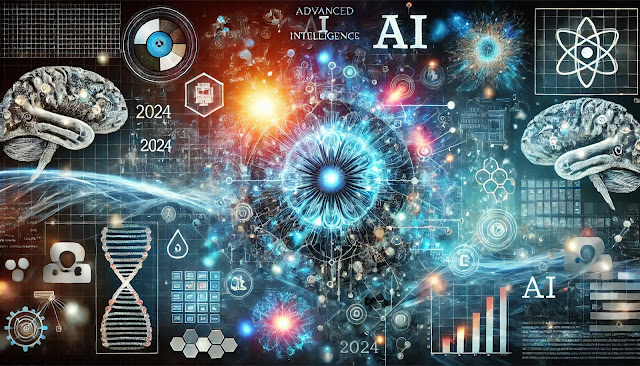Difference Between Supervised and Unsupervised Machine Learning
Machine learning (ML) has become a buzzword in today’s tech-driven world, and for good reason. It's the driving force behind many of the applications we use daily, from recommendation systems to autonomous vehicles. However, machine learning isn’t just a single monolithic concept. It branches out into various types, primarily supervised and unsupervised learning. Let's dive deep into these two major paradigms, exploring their differences, applications, algorithms, pros and cons, and much more. Buckle up, and let’s embark on this ML adventure!
Supervised Learning: The Teacher’s Pet
Supervised learning is akin to a student learning from a teacher. In this scenario, the teacher (a labeled dataset) provides the correct answers, and the student (the machine learning algorithm) learns by comparing its predictions with these correct answers. Over time, the algorithm tweaks its predictions to get closer and closer to the actual answers.
How It Works
- Labeled Data: The key ingredient here is labeled data. Each input data point comes with an associated output label.
- Training Phase: The algorithm learns by mapping inputs to the correct outputs, adjusting itself based on errors.
- Prediction Phase: Once trained, the model can predict outputs for new, unseen data.
Common Algorithms
- Linear Regression: For predicting continuous values (e.g., house prices).
- Logistic Regression: For binary classification problems (e.g., spam detection).
- Decision Trees: For both classification and regression tasks.
- Support Vector Machines (SVM): For classification tasks with clear margin separation.
- Neural Networks: For complex tasks like image and speech recognition.
Pros
- Accuracy: Generally high accuracy due to the availability of labeled data.
- Interpretability: Models like linear regression and decision trees are easy to interpret.
- Efficiency: Effective for large-scale data processing.
Cons
- Data Dependency: Requires large amounts of labeled data, which can be expensive and time-consuming to gather.
- Overfitting: Models can become overly complex, learning noise rather than the underlying pattern.
- Bias: The quality of predictions is heavily dependent on the quality of the labeled data.
When to Use
- Classification Problems: Email spam detection, fraud detection, sentiment analysis.
- Regression Problems: Stock price prediction, sales forecasting, temperature prediction.
Unsupervised Learning: The Free Spirit
Unsupervised learning is like exploring a new city without a map. There's no labeled data to guide the algorithm. Instead, the algorithm tries to find hidden patterns and structures in the input data.
How It Works
- Unlabeled Data: The algorithm works with data that has no labels.
- Pattern Discovery: It looks for patterns, groupings, or structures in the data.
- Inference: The model infers the structure of the data without any external guidance.
Common Algorithms
- K-Means Clustering: For grouping similar data points together.
- Hierarchical Clustering: For creating a tree of clusters.
- Principal Component Analysis (PCA): For reducing the dimensionality of data.
- Anomaly Detection: For identifying outliers in data.
Pros
- Flexibility: Can work with unlabeled data, which is more readily available.
- Discovery: Can uncover hidden patterns in data.
- No Need for Labels: Saves time and resources as no labeling is required.
Cons
- Interpretability: Results can be harder to interpret compared to supervised learning.
- Accuracy: Generally lower accuracy as there's no guided learning.
- Complexity: Can be computationally intensive and harder to tune.
When to Use
- Clustering: Market segmentation, social network analysis, image compression.
- Dimensionality Reduction: Data visualization, noise reduction, feature extraction.
- Anomaly Detection: Fraud detection, network security, fault detection.
Comparative Review: Supervised vs. Unsupervised Learning
Supervised Learning
- Pros: High accuracy, interpretability, efficient for large-scale problems.
- Cons: Requires labeled data, prone to overfitting, potential bias.
Unsupervised Learning
- Pros: Flexible, can discover hidden patterns, no need for labeled data.
- Cons: Lower accuracy, harder to interpret, computational complexity.
Practical Applications
- Supervised Learning:
- Healthcare: Disease prediction, medical imaging analysis.
- Finance: Credit scoring, algorithmic trading.
- Marketing: Customer segmentation, targeted advertising.
- Unsupervised Learning:
- E-commerce: Product recommendations, customer segmentation.
- Security: Intrusion detection, fraud detection.
- Data Analysis: Market basket analysis, pattern recognition.
Diagrams to Clarify Concepts
Conclusion
Supervised and unsupervised learning are two fundamental paradigms in machine learning, each with its unique strengths and challenges. Supervised learning shines when labeled data is abundant and the task requires high accuracy and interpretability. Unsupervised learning, on the other hand, excels in exploratory data analysis, uncovering hidden patterns in unlabeled data. Understanding these differences allows data scientists to choose the right approach for their specific problem, leveraging the power of machine learning to derive meaningful insights and drive innovation.
Pros and Cons Summary
- Supervised Learning:
- Pros: High accuracy, interpretability, efficient for large-scale problems.
- Cons: Requires labeled data, prone to overfitting, potential bias.
- Unsupervised Learning:
- Pros: Flexible, can discover hidden patterns, no need for labeled data.
- Cons: Lower accuracy, harder to interpret, computational complexity.
Which to Apply Where
- Supervised Learning: Ideal for tasks with clear outputs and abundant labeled data, such as classification and regression problems.
- Unsupervised Learning: Suitable for exploratory data analysis, clustering, and anomaly detection where labels are not available.
In the ever-evolving world of machine learning, both supervised and unsupervised learning play pivotal roles. By understanding their differences and applications, we can harness their full potential, paving the way for smarter algorithms and more intelligent systems. So, whether you’re a data science newbie or a seasoned pro, remember: in the realm of ML, there’s always something new to learn and explore!






Comments